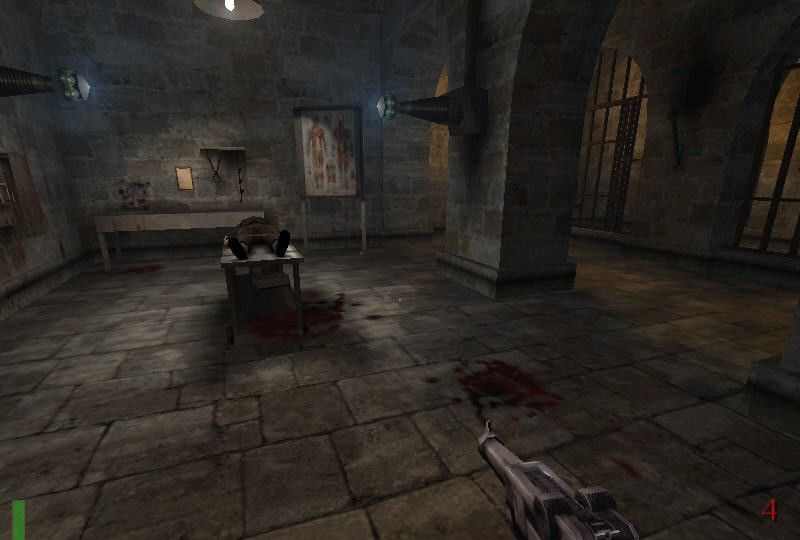

- #Return to castle wolfenstein manual cracked
- #Return to castle wolfenstein manual archive
- #Return to castle wolfenstein manual full

Atari was also able to call on its own team of experienced developers for classic titles Star Raiders and Missile Command as well a community of bedroom coders via the Atari Program Exchange (APX) initiative, essentially creating its own formative indie scene. Launched alongside the technically inferior Atari 400, the 800 was a true gaming home computer, with custom co-processors to handle graphics and sound and four joystick ports, allowing multiplayer titles such as MULE, Airline and Dandy.
#Return to castle wolfenstein manual full
SS head Himmler has Hitler’s full backing to twist science and the occult into an army capable of annihilating. Return to Castle Wolfenstein World War II rages and nations fall.
#Return to castle wolfenstein manual cracked
The PC-88 boasted games from all the major arcade and console developers including Sega, Namco, Square, Hudson and even Nintendo, which released the little known Super Mario Bros Special for the machine. Return to Castle Wolfenstein Free Download PC Game Cracked in Direct Link and Torrent. The dominant Japanese personal computer of the 1980s faced stiff competition from the Sharp X1 and Fujitsu FM7, but held on to its leading position through a series of ever more powerful models. Following the more business-orientated Commodore PET, it was one of the first home computers to really acknowledge the importance of games in its marketing and despite its teeny 5KB memory, saw plenty of landmark titles such as Sword of Fargoal and Metagalactic Llamas Battle at the Edge of Time. Sold as “the friendly computer” the Vic-20 was designed for accessibility, with a low price ($300), colourful graphics, a ROM cartridge port and lots of accessories. Text-based adventures flourished, including Zork and the first titles from genre legend Scott Adams. But it was affordable and widely available in the US from the omnipresent RadioShack stores, leading to a healthy software development scene. Originally paired with a monochrome monitor (basically a cheap black-and-white TV set) and a standard cassette deck, the TRS-80 was nicknamed the Trash-80 by fans of the Apple II and Commodore PET.
#Return to castle wolfenstein manual archive
Text favourite … the Tandy TRS-80 Model 100, Photograph: Nicole Lacourse/Guardian News & Media Archive Basically an arcade machine disguised as a PC. Sharp X68000 (1987)Ī key Japanese personal computer of the late 1980s, the X68000 featured a 16-bit Motorola 68000 CPU, like the Atari ST and Amiga, but with added graphics performance including support for hardware sprites and hardware scrolling, allowing almost perfect conversions of coin-op classics such as R-Type and Final Fight. With excellent graphics and sound, it was a good gaming workhorse and many users cherished its outsider status amid the Spectrum v C64 playground wars. Unfairly considered the also-ran computer of the 1980s, the Amstrad was acclaimed on arrival thanks to its impressive specs and integrated design, which included the keyboard and tape deck into one stylish unit. Initially only programmable through a series of RAM switches on the front, it was hardly a mass-market product, but it got a lot of young nerds into coding (most famously Bill Gates and Paul Allen), and adding a terminal and monitor allowed simple games development. Photograph: Future Publishing/Future/Getty ImagesĪvailable via mail order for just $400 (a fraction of the cost of commercial computers at the time) and built around the 2MHz Intel 8080 CPU, the Altair effectively kickstarted the home microcomputer industry.


 0 kommentar(er)
0 kommentar(er)
